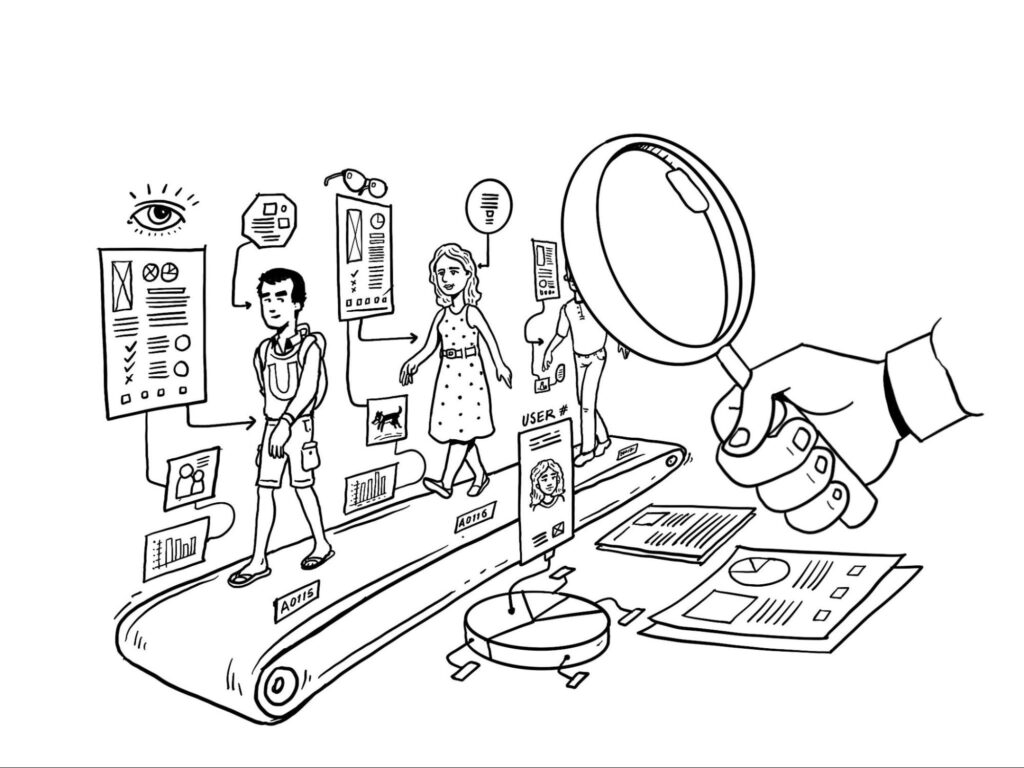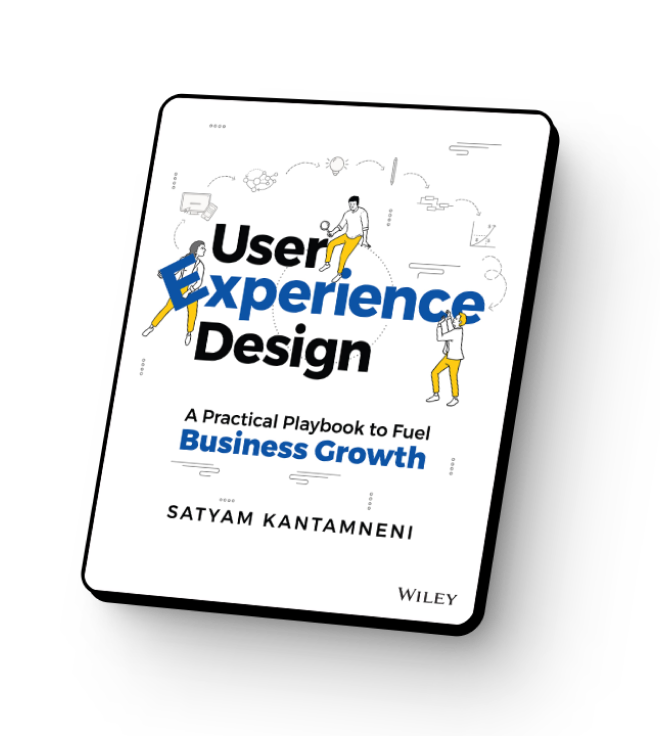
Nothing frustrates users more than when they feel like a product was designed by a company that doesn’t truly understand their needs. To quote a few of the user interviews we have conducted over the past 6 years:
- “I don’t have time to try to figure this out.”
- “This makes no sense.”
- “How does that help me?”
- “Why does it feel like these people don’t get what I do?”
With the global rush to undergo digital transformation over the past few years, it’s become increasingly difficult to deliver industry-leading products. When functionality and performance are table-stakes, what is the key differentiating factor between good and great products? User experience.
But, more often than not, user research is an afterthought rather than a priority. This is an understandable oversight when there are deadlines to be met, or if some level of insight from internal Subject Matter Experts (SMEs) already exists as a proxy.
In many of those cases, the story plays out the same way:
- Company X decides to forego user research and build first, fix later
- The product launches
- Users provide negative feedback on the value or usability of the product
- Cross-functional teams must make a significant investment of time, effort, and resources to course-correct
- Meanwhile, a competitor launches a similar product and gains traction
- Company X is now in “catch-up” mode rather than “market-leading” mode
To thrive in this competitive and demanding world, your product needs to deliver an experience that meets or exceeds users’ growing expectations.
As Sharyn Leaver, Chief Research Officer at Forrester put it,
Heightened expectations for digital experiences pivots to human-centered tech transformation, and anywhere-work strategies going sideways …[are] just a few of the many critical business trends that will define 2022
Sharyn Leaver, Chief Research Officer, Forrester
In short: the competition is increasing and the bar has been raised.
And what is the key to delivering experiences that not only meet, but surpass the bar? To be an empathetic organization driven by user research.
An empathetic organization driven by user research understands that users come first and their goal is to solve problems for those users.
This type of organization is able to make decisions without politics and egos, and they are able to operate with efficiency and success because they can “avoid making erroneous assumptions about [their] users and instead [can] uncover new opportunities based on what [users] actually want and need.” 1
In fact, studies conducted by firms such as The Empathy Business and Lady Geek revealed that the most empathetic companies who just so happen to have strong research functions (Microsoft, Facebook, Tesla Motors, and Alphabet to name a few) “increased in value more than twice as much as the bottom 10 and generated 50% more earnings” because they have happier customers and employees (HBR, World Economic Forum).
——
How can user research save organizations valuable time and resources?

Company X could have used sensorial research to gather concrete, quantitative data on what’s going well, how users are actually using the product, where they are struggling, and where adjustments are needed to better suit the users’ needs.
User research gives you the insight you need to make strategic and tactical decisions on your product or service, and there are 3 different types of research that can help you with those decisions.
1. If you want more confidence in your business and product decisions, or if those decisions currently feel like guesswork, you need FORMATIVE RESEARCH.
This type of user research will give you foundational insights that inform what the business should focus on, and is gathered through methods such as user interviews or ethnographic studies.
In the case of Company X mentioned at the beginning of this article, formative research would have provided direction and prioritization on what problems are most important to solve and what opportunities are most valuable to go after.
2. If you have a product out there, but you keep missing the mark with users, you need SUMMATIVE RESEARCH.
This type of user research will give you insights that validate an existing user experience and identify areas of improvement, gathered through methods such as usability testing or A/B testing.
For Company X, summative research would have told them exactly what users like, dislike, and find easy and difficult about their product before or even after launch. It would have allowed them to pinpoint all the big and small problems their users would face using a much smaller sample size, therefore not running the risk of tarnishing their brand.
3. If you’re unsure about how to measure the success of the user experience of your product over time, you need SENSORIAL RESEARCH.
This type of user research gives you measurable insights which indicate how an existing product is doing in the market, gathered through methods such as click analysis or NPS.
Together, these three types of insights will help nurture empathy in your organization and go far in helping your teams make faster, more confident decisions; innovate on solutions that add value to your users’ lives; and gain a unique competitive advantage over your competitors.
——
OK, but where’s the proof?
Here are some real-life examples of how user research has benefited our partners.

User research results in faster and more objective decision making:
During a project with one of our partners, everyone had been in disagreement on one screen of a scheduling flow for weeks. As time was of the essence, we set up a very quick unmoderated usability test where the designs were evaluated by users who met the quality criteria.
Once the feedback came in, we were able to make decisions and reach a consensus faster by listening to what users had to say. With that, the decision became straightforward and objective. There was no longer a need for debate on which approach to take, and all teams could collaborate more effectively to bring the project to a close.

User research results in a more user-centric product:
While working on a project with a very contained scope, our partners decided to forego user research and instead, depended on internal industry experts for insights. This was misguided because product decisions actually ended up being more like guesswork.
Eventually, they said to us, “As it turns out, we don’t really know enough about the user to answer your questions…” and we quickly pivoted to incorporate user research into our plan. Introducing users into the process changed the conversations from, “We think…” to, “users need…” and subsequent usability studies revealed that we had created an experience that not only met their needs but was also easier to use.
User research results in new strategic positioning:
Another one of our partners enlisted our help to conduct user research to better understand their users’ mental model and decision-making process. We conducted a series of In-Depth-Interviews (IDIs), and we discovered a common theme around what users perceived to be the biggest gap in the market.
This new insight was key in understanding how our partner should position themselves in the market to be seen as the industry leader.
——
Now what?

What can you do to introduce more empathy and user research to your organization to deliver this top-notch experience?
Build user research into your product development lifecycle
Many companies fear losing out on design and development time during research; however, we’ve observed that the ramifications of not doing proper research before design and development are far worse.
Make sure you plan adequate time in your product development timelines to discover, validate, and measure to ensure you’re delivering the right solution and that it is designed in the right way.
It is far more expensive to fix problems when a product is already released than in the earlier stages. According to research done by Clare-Marie Karat at the IBM T.J. Watson Research Center, the savings to cost ratio for a large development project is 100:1, meaning a project that has not been properly tested before launch is 100x more expensive to fix than one that goes through proper testing.
Make it a practice to differentiate between facts and assumptions
There are two UX commandments to remember:
- Know thy user
- Thou are not thy user
Why? Because making key decisions based on assumptions will introduce significant risk to your business.
It’s common for us to assume that users think and behave as we do. Raluca Budiu from Nielsen Norman Group identifies this as the False-Consensus Effect, or “people’s tendency to assume that others share their beliefs and will behave similarly in a given context.
Only people who are very different from them would make different choices.” However, this is a pitfall that must be avoided at all costs.
When those involved in the product development process lack empathy for the user and make decisions on the user’s behalf based on personal assumptions, not only does it risk shipping a product that users do not want or need, but it also risks tarnishing your reputation with users.
Dedicate resources to collecting user insights
User research is a discipline that requires the same level of rigor and precision as the scientific method which has many parallels to the UX design process (hypothesize, ideate, prototype, test, repeat…).
As such, it requires people–whether that be an internal team or a consulting firm–who have the right skills, knowledge, and tools to ensure the reliability and validity of insights derived from user research.
User research has many possible points of failure:
- Talking to the wrong user
- Asking the wrong questions
- Using the wrong methods
- Conducting the method incorrectly
- Synthesizing the data incorrectly
- Communicating the findings ineffectively
Failure at any of these points can render all insights from a study invalid, or worse, it can misguide teams or the entire organization. As mentioned above, nothing frustrates users more than feeling like they are not being understood, meaning they invest in a product that does not solve their problems.
Therefore, it’s crucial to do research the right way with the right people, processes, and tools.
Invest in a user research program
A user research program is a framework of practices and guidelines which ensures that the “right mix of user insights is being collected to drive innovation, help your organization avoid risk, and deliver valuable products that consistently resonate with your users.” (Kantamneni 180).
Running a user research program effectively will drive many benefits to your company including:
- Cross-functional alignment on where to prioritize their resources
- Empowerment of teams to make informed, user-centered decisions
- Solving today’s user problems while keeping tomorrow’s opportunities in sight
- Having a big picture view on how to drive more value to your users and business
If you want to learn more about ways that user research can solve your organization’s challenges, contact us!
Or, here are a few more resources:
- Learn more about the three types of research in this article about the types of research your company should be doing
- In a previous post, I dive deeper into 5 mistakes not to make in user research
- Sarah Khalid talks about which 3 problems to avoid in design and what happens when they are not avoided


